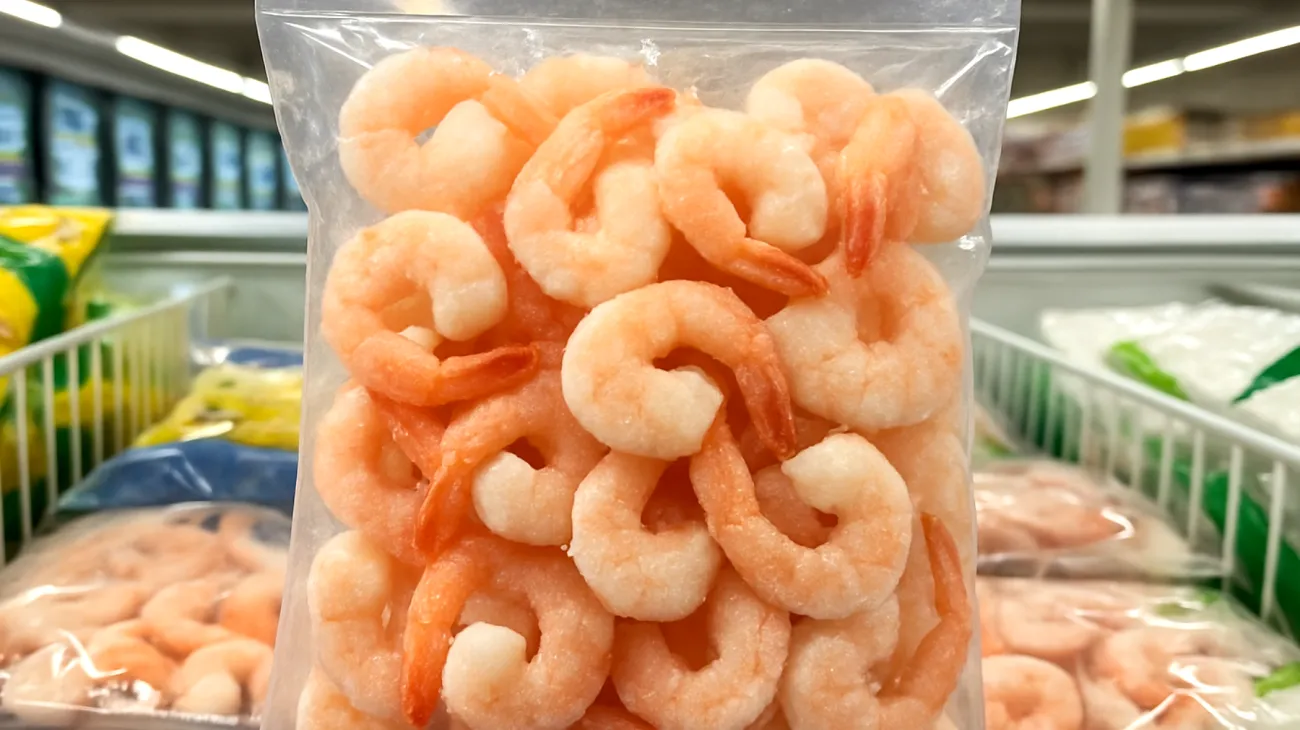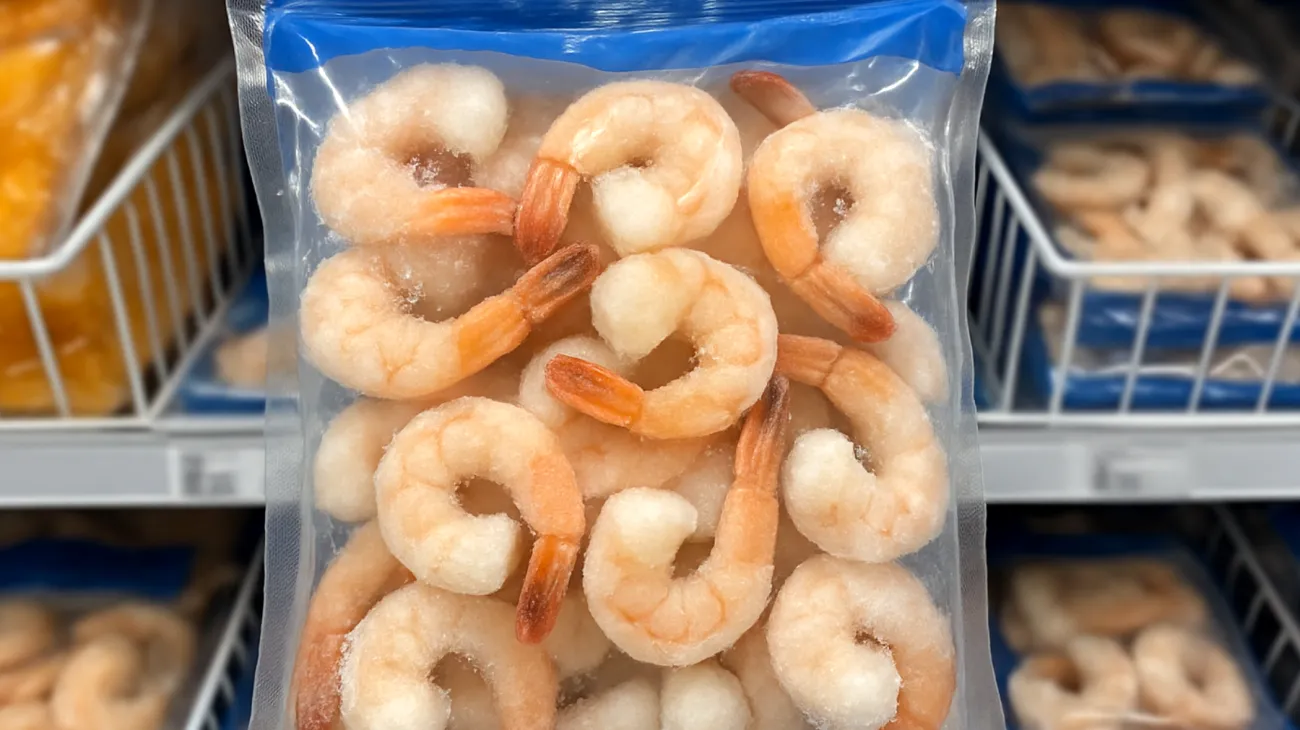Frozen shrimp dominates UAE supermarket freezer aisles, reflecting the country’s vibrant multicultural food market. These convenient protein sources come wrapped in appealing packaging featuring claims like “natural,” “ocean-fresh,” and “protein-rich.” But what’s really inside those colorful boxes, and how do processing methods affect the nutritional value you’re actually getting?
The Reality Behind Frozen Shrimp Marketing
Those gorgeous ocean images on frozen shrimp packaging tell only part of the story. While the imagery suggests freshness, the journey from sea to your freezer involves multiple processing stages that significantly impact the final product. Understanding these processes helps you make smarter choices when navigating those crowded freezer aisles.
Many frozen shrimp products undergo various treatments to preserve texture, color, and shelf life. These processing methods aren’t necessarily problematic, but they can alter the nutritional profile and sodium content compared to fresh shrimp straight from the ocean.
Common Processing Methods
Depending on the manufacturer and destination market, frozen shrimp typically undergoes several standard treatments:
- Sanitizing washes using approved food safety agents
- Phosphate treatments for moisture retention and texture
- Sulfite applications to prevent natural discoloration
- Flash-freezing processes that lock in freshness
- Ice glazing for protection during storage and transport
These treatments vary significantly between brands and processing facilities. While they serve legitimate preservation purposes, they can substantially increase sodium content and introduce additives that sensitive consumers might prefer to avoid.
Decoding Nutritional Claims and Reality
Fresh shrimp naturally contains approximately 150mg of sodium per 100g serving, making it a relatively low-sodium protein choice. However, processed frozen varieties often contain significantly higher sodium levels due to preservation treatments and added flavorings.
The protein claims prominently displayed on packaging refer to the product as packaged, including any added water, glazing, or processing solutions. This means the actual shrimp protein density might be lower than suggested by front-of-package marketing claims.
Phosphate treatments, commonly used in frozen seafood processing, can increase sodium content by 300-500mg per serving while also affecting how your body absorbs certain minerals. These additives must be listed in ingredients, though they often appear as technical terms or E-numbers that aren’t immediately recognizable to average shoppers.
Understanding Additives and Allergens
Sulfites like sulfur dioxide frequently appear in frozen shrimp to maintain appealing color and prevent oxidation. While generally safe for most people, these compounds can trigger severe reactions in sensitive individuals, particularly those with asthma or sulfite allergies.
Food manufacturers must declare sulfites on packaging when present above certain thresholds, but the labeling often uses technical terminology. Learning to recognize these additives empowers you to make choices aligned with your dietary needs and health considerations.

Fresh Versus Frozen: Nutritional Trade-offs
Properly frozen shrimp retains most of its nutritional value, including valuable minerals like selenium, zinc, and iodine. However, processing treatments can significantly alter the overall nutritional profile beyond simple freezing preservation.
The mineral content remains relatively stable through freezing, but added phosphates and sodium-based preservatives change the nutritional equation. These processing aids can interfere with mineral absorption in your digestive system, potentially reducing the bioavailability of naturally occurring nutrients in the shrimp.
Weight and Value Considerations
Ice glazing protects frozen shrimp during storage but adds weight that you pay for at checkout. Industry standards typically allow 10-20% glaze weight, though some products exceed these guidelines. This protective ice layer prevents freezer burn but means you’re purchasing less actual shrimp than the package weight suggests.
Understanding net weight versus gross weight declarations helps determine true value and serving calculations. Some premium brands minimize glazing while others rely heavily on ice protection, creating significant value differences between seemingly similar products.
Smart Shopping Strategies for Better Choices
Reading ingredient lists reveals more about product quality than front-of-package claims. Shorter ingredient lists typically indicate less processing, though this isn’t always synonymous with better nutritional value or food safety.
Comparing sodium content across brands shows dramatic variations, often ranging from 200mg to over 800mg per serving for similar shrimp products. These differences reflect processing methods rather than natural variation in the seafood itself.
Look beyond attractive packaging to examine actual nutritional data and ingredient declarations. Marketing claims like “natural” or “ocean-fresh” don’t guarantee minimal processing or absence of additives that might concern health-conscious consumers.
Key Package Information to Review
Focus your attention on these critical areas when evaluating frozen shrimp options:
- Complete ingredient lists including preservatives and processing aids
- Sodium content per serving and percentage daily values
- Net weight information and glazing percentages
- Allergen warnings, especially sulfite declarations
- Country of origin and processing facility locations
Frozen shrimp remains an excellent convenient protein source when you understand what you’re buying. The extended shelf life and versatility make it practical for busy households planning nutritious meals. Success lies in looking past appealing marketing messages to examine the factual nutritional information that regulations require manufacturers to provide. Armed with this knowledge, you can confidently select products that truly meet your family’s dietary goals and preferences while getting genuine value for your grocery budget.
Table of Contents

